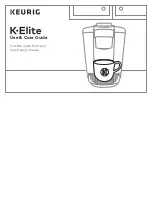
7
4. Fit refrigerant lines into coil stubs. Wrap a heat sinking
material such as a wet cloth behind braze joints.
5. Wrap TXV and nearby tubing with a heat
−
sinking material
such as a wet cloth.
6. Use 1/2 psig Nitrogen purge in the suction and out the
liquid line.
7. Braze using a Sil
−
Fos or Phos
−
copper alloy. Do not use soft
solder.
8. After brazing, allow joints to cool. Carefully remove TXV
bulb insulation and verify that the TXV bulb is securely
fastened with hose clamp. Tighten screw a half
−
turn past
hand tight with TXV bulb placed in the indentation with
full contact with the vapor line tube. Re
−
wrap TXV bulb
with insulation.
9. Leak check connections before insulating entire suction
line.
10. Slide tubing plate with rubber grommets over joints.
Position tubing at center of each grommet to ensure an air
seal around the tube. Reinstall cabinet door.
PRODUCT DAMAGE HAZARD
Failure to follow this caution may result in product or property
damage.
To avoid damage to the refrigerant control device while
brazing, wrap tubing or fittings with a heat
−
sinking material
such as a wet cloth.
CAUTION
!
PERSONAL INJURY HAZARD
Failure to follow this warning could result in personal injury.
Wear eye protection.
Coil is factory charged with 15 psi nitrogen. The coil is under
pressure and TXV screen is in place behind liquid line plug.
DO NOT removed liquid line plug first; always remove the
suction line plug first to depressurize the coil.
!
WARNING
REFRIGERANT METERING DEVICE
CNPVU Models:
These coils have a factory
−
installed hard
−
shutoff TXV designed
only for use with Puron refrigerant (R
−
410A). Use only with
outdoor units designed for R
−
410A.
CNRVU Models:
These coils have a factory
−
installed hard
−
shutoff TXV designed
only for use with R
−
22 refrigerant. Use only with outdoor units
designed for R
−
22.
NOTE
: ALL TXVs HAVE PRESET SUPERHEAT SETTINGS
AND ARE FIELD
NON
−
ADJUSTABLE
.
Procedure 6 — Condensate Drain Line
Connection
PROPERTY DAMAGE HAZARD
Failure to follow this caution may result in property damage.
When installing over a finished ceiling and/or living area,
install a field
−
fabricated secondary condensate pan under the
entire unit.
CAUTION
!
The coil is designed to dispose of accumulated water through
built
−
in condensate drain fittings. It is recommended that PVC
fittings be used on the condensate pan. Do not over
−
tighten. Finger
tighten plus 1
−
1/2 turns. Be sure to install plastic plug in unused
condensate drain fitting. Two 3/4
−
in. female threaded pipe
connections are provided in each coil condensate pan.
A trap is not necessary on the condensate line. Consult local codes
for additional restrictions or precautions. If local codes require a
trap then the following guidelines are suggested to assure proper
drainage. Install a trap in condensate line of coil as close to the coil
as possible. Make trap at least 3 in. (76 mm) deep and no higher
than the bottom of unit condensate drain opening (See Fig. 15).
Pitch condensate line 1 in. (25.4 mm) for every 10 ft. of length to
an open drain or sump. Make sure that the outlet of each trap is
below its connection to condensate pan to prevent condensate from
overflowing the drain pan. Prime all traps, test for leaks, and
insulate traps and lines if located above a living area.
3” / 76mm
A08067
Fig. 15
−
Condensate Trap
NOTE
: If unit is located in or above a living space, where damage
may result from condensate overflow, a field
−
supplied, external
condensate pan should be installed underneath the entire unit, and a
secondary condensate line (with appropriate trap) should be run
from the unit into the pan. Any condensate in this external
condensate pan should be drained to a noticeable place. As an
alternative to using an external condensate pan, some localities
may allow the running of a separate 3/4
−
in. (19 mm) condensate
line (with appropriate trap) per local code to a place where the
condensate will be noticeable. The owner of the structure must be
informed that when condensate flows from secondary drain or
external condensate pan, the unit requires servicing or water
damage will occur. To further protect against water damage, install
a float switch to shut the unit off if the water in the secondary pan
gets too high.
NOTE
: To avoid drainage problems, test the primary drain line by
slowly pouring water into the pan. Check piping for leaks and
proper condensate drainage. Using the secondary drain as


























